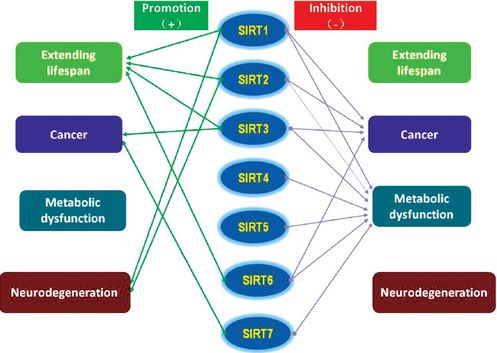What does Sirtuin stand for?
 Sirtuin is a gene and is made up of a class of proteins that are found in organisms ranging from bacteria to humans with either histone deacetylase or mono-ribosyltransferase activity. It is also known as Silent Information Regulator Two (Sir2 or SIRT) proteins and is named after yeast silent mating-type information regulation two. Yeast Sir2 and some Sirtuins are made up of protein deacetylases which are enzymes that act as the one that removes acetyl groups from lysine amino acids in proteins.
Sirtuin is a gene and is made up of a class of proteins that are found in organisms ranging from bacteria to humans with either histone deacetylase or mono-ribosyltransferase activity. It is also known as Silent Information Regulator Two (Sir2 or SIRT) proteins and is named after yeast silent mating-type information regulation two. Yeast Sir2 and some Sirtuins are made up of protein deacetylases which are enzymes that act as the one that removes acetyl groups from lysine amino acids in proteins.
So how many Sirtuins are there? Based on the Northern/Verdin diagram, there are a total of seven SIRT which is classified in four groups.
Class 1 consists of SIRT1, SIRT2, and SIRT3. SIRT1 gene, located in the nucleus which made up of NAD-dependent deacetylase Sirtuin 1, has an enzyme that deacetylates proteins which contribute to cellular regulation. This is also termed as a reaction to the stressors and/or longevity. Such activity is being regulated within the cells that have high insulin resistance. Then, it induces its expression in order to be able to increase insulin sensitivity by which the associated molecule is believed to have the ability to improve insulin sensitivity. SIRT2 gene, located within the cytoplasm, is further made up of NAD-dependent deacetylase Sirtuin 2. It has an enzyme called tubulin deacetylase, which works by blocking the entry to chromosome condensation as a reaction to mitotic stress. This is how Sirtuin does its function as a part of normal cell cycle tumorigenesis.
SIRT3 gene, located in the nucleus and is also made up of NAD-dependent deacetylase Sirtuin 3. This gene has two primary functions which are predominantly mitochondrial in nature. It implicates the regulation of metabolic processes within the body. Furthermore, it also has a nuclear function as it protects cardiomyocytes from stress-mediated cellular damage due to deacetylation of a nuclear factor.
Class II consists of SIRT4 gene is located in the mitochondria of intracellular molecules. It is made up of silent mating type information regulation-2 homolog-4. It also acts in beta cell mitochondria in order to repress the activity of glutamate dehydrogenase by means of the ribosylation process of adenosine tryphosphate. As a result, the insulin secretion in response to the presence of certain amino acids is regulated.
Class III consists of SIRT5 gene, located in the mitochondria of intracellular molecules, is further made up of NAD-dependent deacetylase sirtuin-5. It functions as an intracellular regulatory protein that has a mono-ADP-ribosyltransferase activity. It also takes part in natural bodily processes that involve ammonia detoxification.
Class IV consists of SIRT6 and SIRT7. SIRT6 gene, located in the nucleus of intracellular molecules, is comprised of NAD-dependent deacetylase Sirtuin 6. It regulates glucose homeostasis, DNA and also certain processes involved in metabolism. SIRT7 gene, located in the nucleolus of intracellular molecules, consists of NAD-dependent deacetylase sirtuin-7. Its main function is in rDNA transcription. It has other functions as well, such as in increasing stress resistance of the body’s cardiomyocytes as well as preventing apoptosis from happening. In mice, this particular gene has been tested to have the ability to prevent inflammatory cardiomyopathy.
In addition, studies today show that Resveratrol can trigger Sirtuin genes to be able to cause an extension of the regular life span. In fact, something likes this is quite the same with the effect of calorie restriction.
According to Dr. Jef Boeke, Sirtuins are highly conserved across various species; hence it is a never-before-described gene. It also has clinical significance, such as in treating degenerative diseases like Type II diabetes mellitus, artherosclerosis, and gout, due to the nicotinamide-binding effect of increased Sirtuin activity. Basically, Sirtuins are very important when it comes to normal bodily functions such as metabolism, regulation of insulin secretion, cell cycle tumorigenesis, rDNA transcription, DNA repair, and ammonia detoxification, among others.

